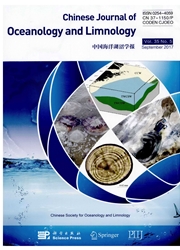

 中文摘要:
中文摘要:
在在中国边缘的海上的表面季风风的研究,阳光等。(2012 ) 使用单个价值分解方法识别地区性的主导的模式并且分析他们的 interdecadal 可变性。这份报纸继续评估每个主导的模式和它的关系到的 interannual 可变性各种各样大气,海洋并且陆地因素。调查结果包括:1 ) 在华东海上的冬季季风的紧张高度与西伯利亚的高紧张被相关并且与象在东方中国,朝鲜半岛和日本的降雨一样低的阿留申群岛之土人的纬度的位置相关反;2 ) 西方的和平的副热带的高度显著地在华东海上与夏天季风紧张被相关并且与在华南海上的夏天季风相关反;3 ) 在通过吕宋岛海峡的一条宽广的带的带的冬季季风被 ENSO 信号统治,在 La Ni 加强 ? 一个阶段并且在 El Ni 变弱 ? o 阶段。这种反的关系在 1980 年代与弱关联的一个时期展出 interdecadal 移动;4 ) 潮汐的记录的分析验证东方亚洲夏天季风变弱的 interdecadal 并且揭示经由冬季季风传送 ENSO 信号进华南海的一座大气的桥。
 英文摘要:
英文摘要:
In a study of surface monsoon winds over the China marginal seas, Sun et al. (2012) use singular value decomposition method to identify regional dominant modes and analyze their interdecadal variability. This paper continues to evaluate the interannual variability of each dominant mode and its relation to various atmospheric, oceanic and land factors. The findings include: 1) The intensity of the winter monsoon over the East China Sea is highly correlated with the Siberian High intensity and anti-correlated with the latitudinal position of the Aleutian Low as well as the rainfall in eastern China, Korean Peninsula and Japan; 2) The western Pacific subtropical high is significantly correlated with the summer monsoon intensity over the East China Sea and anti-correlated with the summer monsoon over the South China Sea; 3) The winter monsoon in a broad zonal belt through the Luzon Strait is dominated by the ENSO signal, strengthening in the La Nifia phase and weakening in the E1 Nifio phase. This inverse relation exhibits interdecadal shift with a period of weak correlation in the 1980s; 4) Analysis of tidal records validates the interdecadal weakening of the East Asian summer monsoon and reveals an atmospheric bridge that conveys the ENSO signal into the South China Sea via the winter monsoon.
 同期刊论文项目
同期刊论文项目
 同项目期刊论文
同项目期刊论文
 期刊信息
期刊信息
